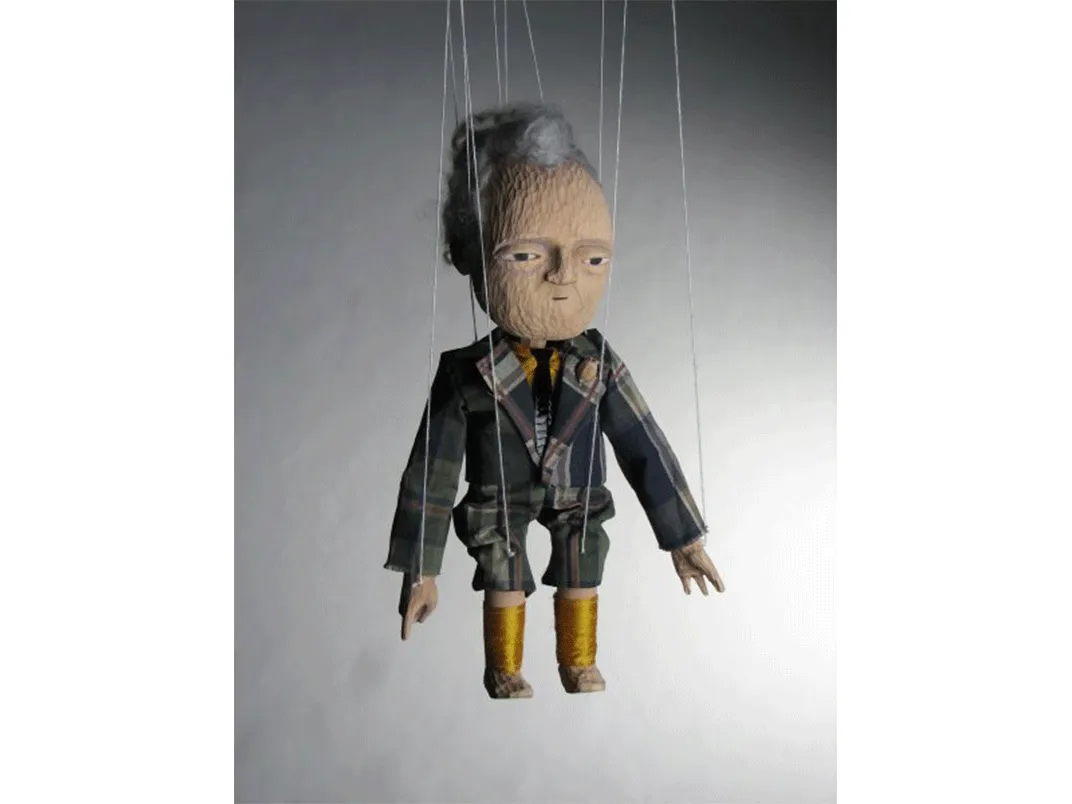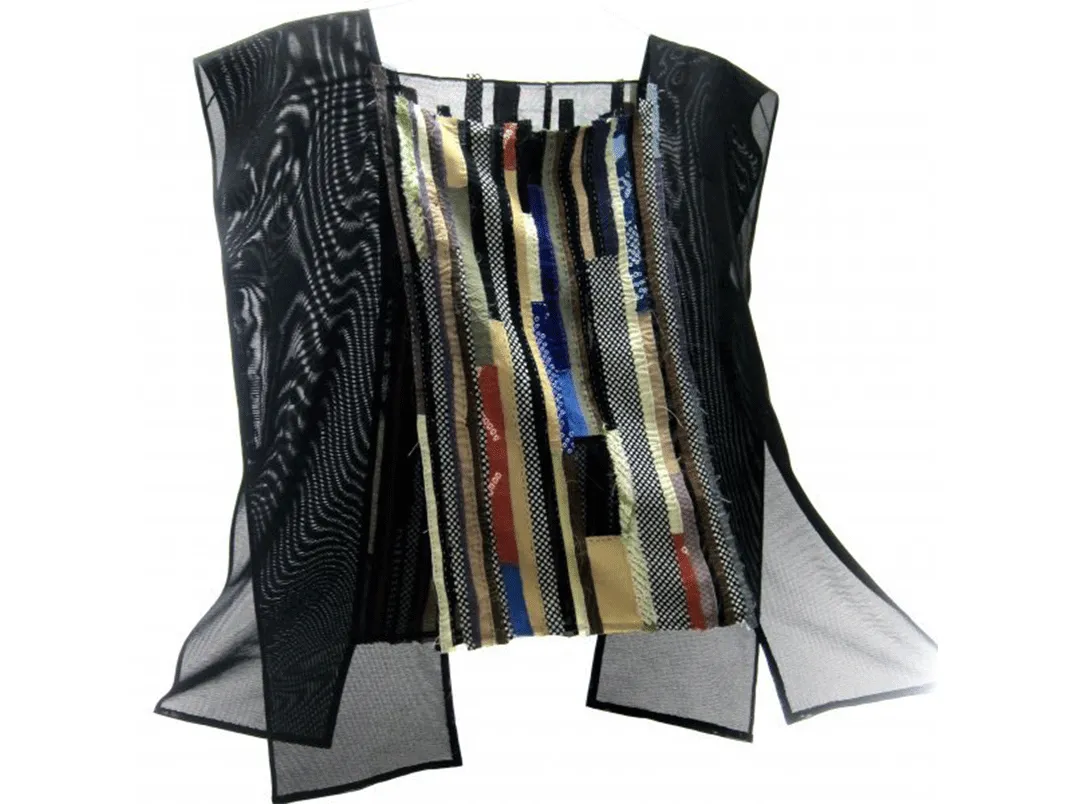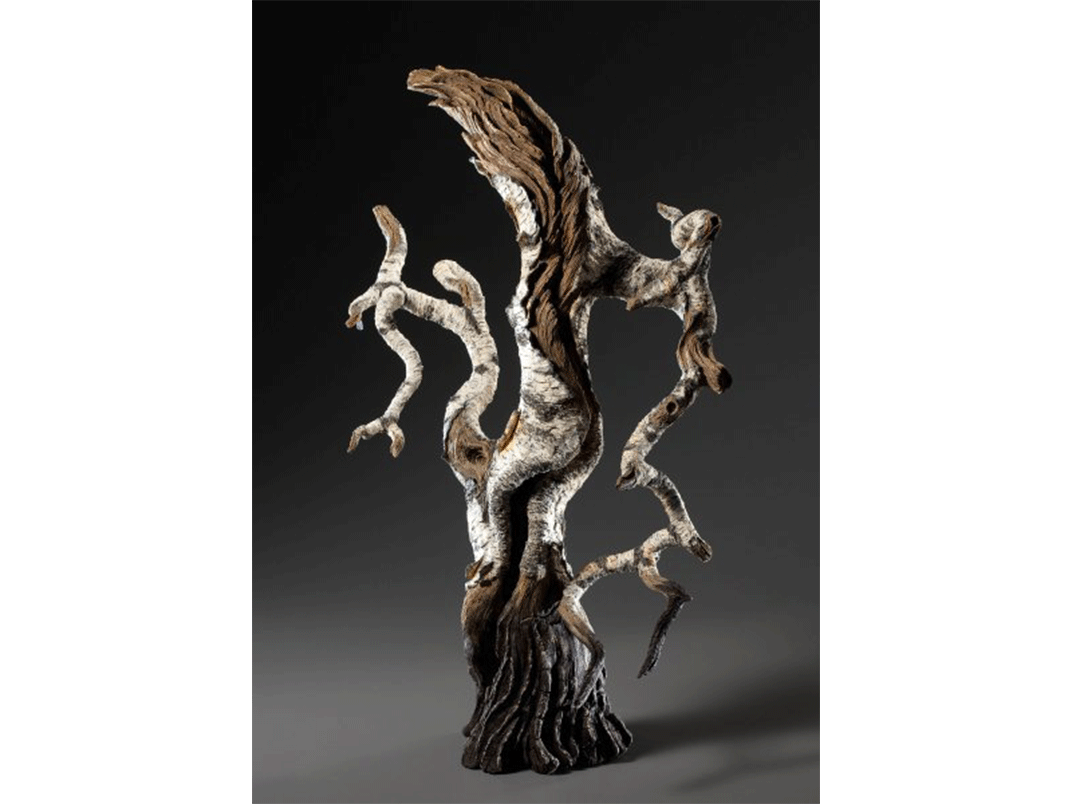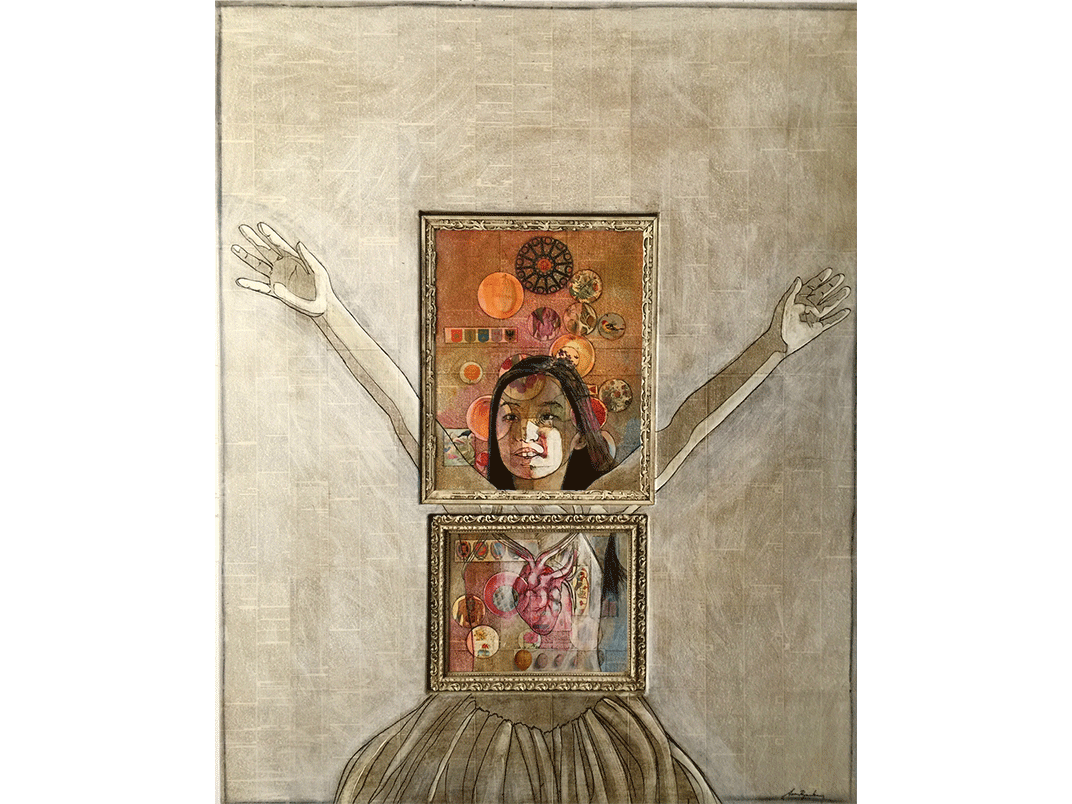Calling All Those in the Market for Skateboard Jewelry, Czech Marionettes or Other Quirky Crafts
The annual Smithsonian Craft Show features 120 of the best craft artisans from around the country
:focal(536x581:537x582)/https://tf-cmsv2-smithsonianmag-media.s3.amazonaws.com/filer/d6/a0/d6a01bc8-acd4-432e-9bb9-7a06bc44d91a/locklearweb.jpg)
Tara Locklear is a regular at the Backdoor Skate Shop in Greenville, North Carolina, but not for the typical reasons patrons frequent the business. When Locklear walks out the shop’s door, she’s not hauling her next sweet ride. Instead, she carries a stash of broken skateboards that she will transform into high-end jewelry.
As a professional jeweler, Locklear uses alternative materials in her work, including cement, concrete, plastics and steel. She started working with recycled skateboards in 2011 as a student at East Carolina University.
“I feel like all of my jewelry is wearing a memory because the skateboards, you can tell by the street patina the history of where they’ve been and how they’ve been ridden, and all the places that they’ve gone. It’s just so fascinating to me, to wear a story,” she says.
She is one of 120 jewelers, wood workers, sculptors and other craftspeople whose work will be on display and for sale at the annual Smithsonian Craft Show in Washington, D.C. Produced by the Smithsonian Women’s Committee, the Smithsonian Craft Show is considered one of the most prestigious juried craft shows in the country. Proceeds from the show fund Smithsonian Institution exhibitions and scholarship.
Finding herself disillusioned with her 11-year career in the corporate world, Locklear returned to college to finish her undergraduate degree in design, where she was challenged by an art professor to find ways to use alternative materials.
She turned to skateboards, which played a significant role in her extracurricular life during her youth. Though she isn’t an intense skateboarder today, Locklear feels a strong connection to the extreme sports community whose company she pursued and enjoyed as a child.
“My jewelry has brought me back to my roots and I can’t be more thankful for that,” she says.
In her workshop in North Carolina, Locklear uses machinery to cut the skateboards, which are made of seven layers of maple wood, and then sands them down by hand. She doesn’t regret her time in the corporate world, but she’s found her purpose in her craft.
“It made me remember and want the things that I no longer had, which was freedom to be different and to really have my own voice. We all have a choice at what we want to leave behind in this world, and this was my choice,” she says.

Niki Ulelha, a craftsman based in San Francisco, also connects with her roots through her craft. During her undergraduate years at Stanford University, Ulehla received a research grant to learn the art of marionette making in her father’s homeland of the Czech Republic. She first saw the marionettes on a trip to the country years earlier, and recalls thinking they were “totally magical.” Ulehla hand carves several different types of marionettes ranging in size from a few inches to one and a half feet out of various materials including wood, ebony and sterling silver.
Her puppet collection includes George Washington, a chicken, a crow and a crow monster—she also enjoys making animal-people hybrids.
Though she has was invited to the Smithsonian Craft Show one other time for her jewelry business, this will be her first time showing the marionettes, the craft she has focused on since the birth of her daughter two years ago. And lest anyone think these puppets are simply decorative, Ulehla notes they are fully functional and she has found a passion in performing with them. Her current show, which she performs with two other puppeteers, is based on Dante’s Inferno.
“I always thought I was a very shy person but then after maybe five years, I had all these puppets in my house and I thought ‘these guys need to work. They need to do their jobs,’” she says.

Yoshiko Komatsu has been making wearable art since 2012, but she’s been in the field of fiber arts since she completed her master’s degree in Japan about 30 years ago. Her preferred material is kimono silk, which she imports via her family in Japan. Then she repurposes the fabric, which she notes can have a lifespan of hundreds of years, to create her “western” styles in her studio in Chicago.
“Japanese style is straight, like origami,” she says. “Western styles use so many cuts. I like to continue those concepts: using straight fabrics, making them into different shapes,” she explains.
Recycled kimono fabric provides a way for her to merge her heritage with her contemporary craft aesthetic, but it also forms the foundation on which she can express her dedication to environmentally friendly design principles.

Eric Serritella, the Renwick Gallery’s 2016 Distinguished Artist in Ceramics, never imagined becoming a professional craftsman. He first learned the art in the mid-1990’s at a local six-week pottery course in his home near Ithaca, New York, where he fell in love with wheel throwing. Finding a calling in the craft, Serritella left his corporate marketing job to become a full time potter, his training for which included a couple of artist residencies in Taiwan where he learned from master ceramics craftsmen. He began hand carving his signature ceramic birch trees in 2007, and premiered them at his first Smithsonian Craft Show the following year.
The trees are in the style of trompe l’oeil, which translates to a trick of the eye, because of their realistic appearance. Though the art of carving trees is nothing new in the Taiwanese tradition, Serritella brings his own touch to the craft with the birch trees, a species unknown in the region where he studied but special to him.
“Birch trees to me are kind of the angels of the forest, in their beauty, in the way they oversee the forest,” he says.
This year’s craft show will be Serritella’s sixth in a row, and he looks forward to premiering two pieces, which he calls his “masterworks.”
“For me my art is the story of my subconscious told through my hands,” he says.

Aaron Hequembourg is a mixed media artist based in Georgia. A printmaker by training, Hequembourg could not afford a printing press when he graduated from college and thus filled his artistic void by carving images into wood.
Soon after moving to his wife’s family farm near Monticello, Georgia, a family member suggested they burn down the sharecropper’s houses, which had been on the property for centuries. Rather than lose the valuable art material, Hequembourg deconstructed the houses and collected the wood and other historical items found in the houses, such as books, for his art.
For his current body of work he attaches book pages, ranging from the years 1865 to 1890, to wood on which he completes an industrial decoupage treatment. When the page and wood combination has dried and hardened, he smooths it over with a sander. He then carves into the wood drawings of individuals he’s photographed and finishes by painting them. One of his most recent works, which will likely be at the Smithsonian Craft Show, depicts Mei Hui, a young Chinese girl adopted by a family in his community. The piece highlights her heart because she required cardiac surgery when she arrived in the U.S.
Just like the painting of Mei Hui, Hequembourg’s pieces usually tell the story of the illustrated individual. “These are subject driven. They’re very human. They’re often human rights. That’s not really portrayed very much in high design,” he explains.
The Smithsonian Craft Show, April 21-24, 2016 is held at the National Building Museum, 401 F Street, NW, Washington, D.C. Admission is $20. For those unable to attend, check out the online auction.
/https://tf-cmsv2-smithsonianmag-media.s3.amazonaws.com/accounts/headshot/DSC_0154.JPG.jpeg)
/https://tf-cmsv2-smithsonianmag-media.s3.amazonaws.com/accounts/headshot/DSC_0154.JPG.jpeg)